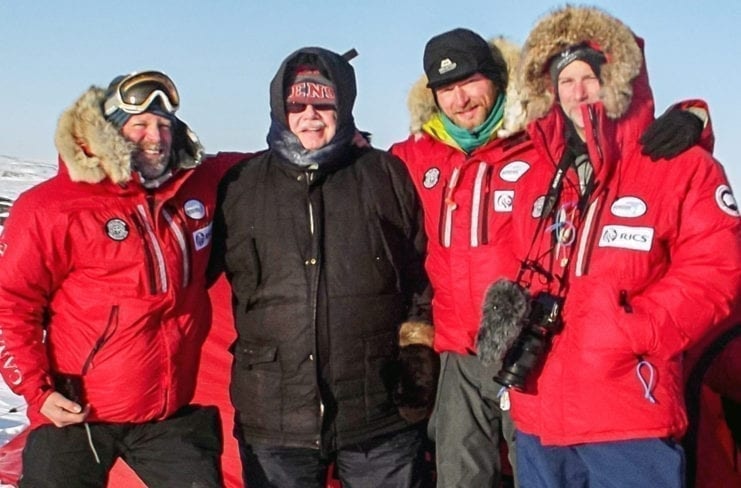Despite losing one of its members, the Arctic Return Expedition is continuing its hike across the tundra in an attempt to re-enact Orcadian explorer John Rae’s historic 1854 650-kilometre trek from Naujaat to the coast adjacent to King William Island.

Filmmaker and photographer Garry Tutte suffered an ankle injury shortly after leaving Naujaat earlier this month and had to withdraw from the expedition, leaving members David Reid, Frank Wolf and Richard Smith to try and complete the re-enactment.
Students and staff members at Tuugaalik High School had been eagerly awaiting a visit from the expedition-and-documentary team prior to starting their quest.
School culture-and-shop teacher Laimmiki Malliki served as chief guide for the planned rendezvous between staff members, select students and the Scottish team members at Rae’s stone house on the land near Naujaat. He also helped plan their walking route before they left.
School principal Aubrey Bolt said the visit went extremely well, despite Mother Nature not being in a co-operative mood.
He said the interaction between students and staff members was highlighted by the expedition members receiving help and guidance from Inuit in almost exactly the same way Rae did 165 years prior.
“The four adventurers came into the school and talked to the kids about what they were doing and the plan for us to meet them at Rae’s stone house before they left,” said Bolt.
“It didn’t work quite that way because we had bad weather for a couple of days. We went to the stone house but they weren’t there, so we marked it for them and met up with them about three-quarters of
the way there.
“They spoke with Laimmiki (Malliki) and fellow guide Jerry Nuluk on the best trail forward from that point, and showed the students with us their tents and the kind of equipment they were using on the trip.”
Bolt said the students asked plenty of good questions during their time with the adventurers, especially concerning the importance of Inuit knowledge and survival skills for the original trek, as well as how important it remains for them today.
He said it was fascinating to watch and listen as Malliki and David Nimiqtaqtuq, who is originally from Gjoa Haven, showed them the best routes to take and what to watch out for.
Bolt said one new thing Naujaat students learned about John Rae is one of the final chapters in his story.
He said the Inuit Rae met along the way in 1854 told him the hard truth of the fate the members of the Franklin Expedition ultimately succumbed to.
“They told him they all died and, near the end, they were reduced to eating the remains of their dead comrades in an attempt to survive the horrible ordeal.
“When Rae went back to England and told the British Admiralty and society what had happened, he was really looked down upon because the idea of the day was that English gentlemen would never resort to cannibalism, no matter what the circumstance.
“So he was viewed in ill repute and basically died a broken man and the kids here weren’t aware of that.
“Nor did they know the house Rae grew up in was still in Scotland and part of the group’s fundraising effort is to help restore it.”
Bolt said it’s important for everyone to note, especially to the community of Naujaat, the success of the trip in 1854, as well as the trip being undertaken today, is based on Inuit knowledge of the land.
